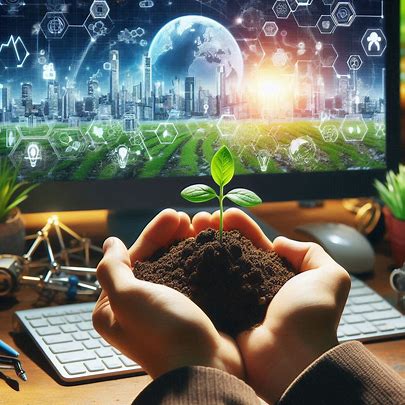
Technology plays a pivotal role in shaping a sustainable future. As industries evolve, there is an increasing need to balance innovation with environmental stewardship. Sustainable innovation is not just a trend but a necessary movement. It focuses on creating technological advancements that do not come at the expense of the environment.
Many companies are leading this shift. One example is Solveo, a firm at the forefront of sustainable technology solutions. Solveo combines innovation and environmental responsibility to offer products and services that minimize carbon footprints while maximizing efficiency.
The Importance of Sustainable Innovation
Sustainable innovation aims to integrate technology with practices that reduce environmental harm. This concept goes beyond just using green technology—it involves designing systems and processes that prevent environmental degradation from the outset. Sustainable innovation ensures that the benefits of technology do not overshadow the need to protect our planet.
Some key benefits include:
- Reduced emissions
- Lower resource consumption
- Enhanced energy efficiency
- Improved waste management systems
When technology is designed with sustainability in mind, it ensures long-term benefits both for businesses and the environment.
How Technology Is Driving Sustainability
In recent years, advancements in renewable energy, recycling technologies, and artificial intelligence (AI) have transformed how industries manage their environmental impact. Companies use cutting-edge solutions to address pressing challenges like pollution, resource depletion, and climate change.
For instance, solar and wind energy technologies have made strides in reducing reliance on fossil fuels. Similarly, AI-powered systems help monitor and optimize energy use, reducing unnecessary consumption. As more organizations adopt these solutions, the cumulative positive impact on the environment grows.
Examples of Sustainable Technology
- Renewable Energy Sources: Solar, wind, and hydropower have become essential to reducing carbon emissions and ensuring a clean energy supply.
- Electric Vehicles (EVs): EVs are reducing our dependence on gasoline, decreasing air pollution and greenhouse gas emissions.
- Sustainable Agriculture: Technology-driven farming techniques, such as precision agriculture, minimize water use and maximize crop yields, creating a more eco-friendly food production system.
- Smart Cities: Cities are integrating IoT devices to manage traffic, waste, and energy, improving urban living while reducing resource consumption.
The Role of Companies Like Solveo
Companies like Solveo are essential players in the sustainable innovation landscape. They focus on delivering technology solutions that prioritize environmental responsibility. Solveo’s approach demonstrates that innovation can be green and efficient simultaneously, providing products and services that help businesses transition into more eco-friendly operations.
Through their work, Solveo shows that environmental responsibility can be woven into the fabric of technological innovation. Their solutions help companies minimize waste, optimize energy use, and streamline operations while reducing their environmental impact.
The Future of Sustainable Innovation
The future is bright for sustainable innovation. As public awareness of environmental issues grows, companies are under increasing pressure to adopt greener practices. Governments and regulatory bodies also enact policies pushing industries toward more sustainable models.
Looking ahead, we can expect to see the following developments in sustainable technology:
- Circular Economy Models: Where waste is reused, recycled, or repurposed, making production more sustainable.
- Energy Storage: New energy storage technologies will play a key role in supporting renewable energy systems, allowing us to store excess energy from solar and wind power.
- Green Manufacturing: Innovations in manufacturing processes will focus on reducing resource consumption and emissions, making industries more sustainable.
- Biodegradable Materials: New materials that break down naturally will be developed, reducing waste’s environmental impact.
Challenges and Opportunities
Despite the progress, sustainable innovation faces challenges. These include the initial cost of adopting new technologies, resistance to change in traditional industries, and the complexity of developing systems that balance efficiency with sustainability.
However, these challenges also present opportunities. As more businesses see the long-term benefits of sustainable practices, investments in green technology will increase. Companies prioritizing sustainability will have a competitive edge, benefiting from reduced operational costs, improved brand reputation, and compliance with regulatory standards.
READ ALSO: Technology’s Role in Environmental Conservation
Conclusion
Sustainable innovation represents the intersection of technology and environmental responsibility. It’s a necessary step in ensuring that technological advancement does not come at the expense of our planet. Companies like Solveo lead the charge, demonstrating that sustainability and innovation can go hand in hand. Technology will play an even greater role in driving sustainable practices across industries as they evolve.
By embracing sustainable innovation, we can create a future where technology improves our lives and preserves the environment for future generations.